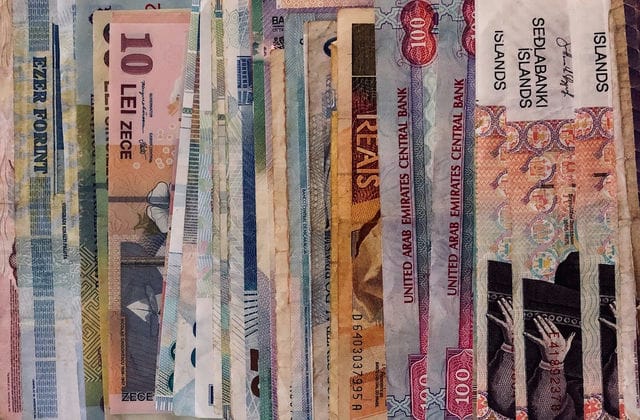In this issue, Haitong Futures Options Department brings you an introduction to the BSM (Black-Scholes-Morton) model. We hope that investors can understand the advantages and disadvantages of the BSM model so that they can achieve the objective of using the model to assist in determining the reasonable value of options.

The BSM model is a wonderful and powerful pricing method. The mathematical logic behind it is clever and sophisticated, and the practicalities are quite intuitive and simple. With the BSM model, traders simply enter the strike price, time remaining to expiry, underlying asset price, underlying asset volatility and risk-free rate to obtain the corresponding option price. What's more, of the five parameters mentioned above, only the volatility of the underlying asset price needs to be estimated, while the values of the other parameters can be accurately obtained from the market. This greatly reduces the probability of human error and enhances the operability of the model. It is because of these advantages that the BSM model is still the most popular option pricing model in the world. Nowadays, theoretical values calculated by the BSM are available in general options trading software, giving traders a reference.
At this point, the reader may wonder, if the BSM model can give reasonable option prices, then why do the market prices of options often contradict the model prices? In other words, if the model price and the market price are at odds, can traders really profit in the long run by capturing the spread between the model price and the market price? To answer this question, we must understand the assumptions of the BSM model, the main assumptions of which are: that the underlying asset price conforms to geometric Brownian motion, that the underlying asset price moves continuously (no short-selling), and that there is a complete frictionless capital market (abundant liquidity, no commissions, short selling allowed, etc.). The first two assumptions qualify the way in which the price of the underlying asset moves, while the latter one requires a degree of capital market development.
Firstly, the BSM assumes that the price of the underlying asset moves in a geometric Brownian fashion. By qualifying that the underlying asset price moves geometrically Brownian, the BSM model is in fact qualifying that the underlying asset return must be normally distributed and that its price must be log-normally distributed at some point in the future. This assumption is convenient for mathematical derivation, but a large amount of data, facts do not support this simple assumption of the price movement of the underlying asset, for example, within this assumption, the world is simply not going to see a situation like the one in 1987 when the US stock market fell by 22.6% in a single day, leaving option sellers following the BSM model with their tongues tied in their mouths and going bankrupt. Much less would there have been an extreme trend market in 2008 when the stock market fell sharply on one side in a row. As a result, the BSM underestimates the probability of a "black swan" occurring in many markets and underestimates the price of vanilla call and put options.
Look at the BSM's assumption that the underlying asset will move continuously. This assumption has a huge impact on the core theory of the BSM. Because it is on the basis that the underlying asset moves continuously that the BSM assumes that investors can dynamically hedge the risk of an option by buying and selling the underlying asset at any time, a differential equation without stochastic terms can be derived and the BSM formula can be invented. The BSM significantly underestimates the price of options on illiquid underlying assets, which are subject to frequent short-selling.
Finally, the BSM assumes a complete frictionless capital market. This assumption is probably closer to reality than the first two. However, in countries with less developed capital markets, this assumption can also cause the BSM option price to deviate significantly from the market price. For example, in a market where there is no short selling mechanism, the price of a put option will often be higher than the price predicted by the BSM to compensate for the fact that the seller of the option cannot use short selling to effectively hedge against a fall in the price of the underlying asset. This premium compensates for the immaturity of the capital markets.
There are two reasons why people still use the BSM, given the impracticality of its assumptions: firstly, today's BSM models provide more of a benchmark. Firstly, the BSM model today provides more of a benchmark, because if we know that the market is in line with the BSM assumptions at the time, then the option price should not deviate too much from the BSM price, and conversely, we can add a corresponding risk premium to the BSM price to arrive at what we think is a reasonable price. Secondly, within the BSM framework, traders can quickly identify the relative price of an option. For example, Option A has a BSM price of $10 and a market price of $14, while Option B has a BSM price of $2 and a market price of $4. Clearly, Option B is more expensive relative to Option A because Option A has a 40% risk premium while Option B has a 100% risk premium.

Delman, the inventor of the partial volatility model, then said that all financial models are wrong. Because finance is not physical, the price of a financial asset is always influenced by an interplay of factors, and as society evolves, old factors may fail and new ones may emerge. Therefore, when dealing with financial pricing models, we do not require a precise answer, but rather a framework for obtaining the best answer. An excellent framework for finding a reasonable price for options is something like the BSM.





























